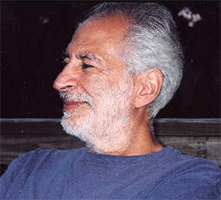Gerald Enoch Sacks 1933-2019
Professor Emeritus of Mathematical Logic at MIT and
Harvard
Published: October 28, 2019

Gerald Enoch Sacks, Professor Emeritus of Mathematical Logic at MIT and Harvard, died at his home in Falmouth, Maine, on Friday October 4, at the age of 86.
Sacks joined the MIT mathematics faculty as Professor of Mathematics in 1967 (with his title changed to Professor of Mathematical Logic in 1971), following a year as a Visiting Associate Professor, and several years on the Cornell mathematics faculty. In 1973, he was appointed on a rare joint professorship between MIT’s and Harvard's mathematics faculty. This accommodated further developments in mathematical logic, to which Sacks had made a number of original contributions, particularly in the area of recursion theory, a precursor of today's computer science. One of his doctoral students, Ted Slaman (PhD '81 from Harvard) wrote a description of Sacks's research contributions, which is included below.
Sacks authored three books, a 1963 monograph, Degrees of Unsolvability, the book, Saturated Model Theory in 1972; and in 1990, Higher Recursion Theory. He also published Mathematical Logic in the 20th Century in 2003, a collection of influential papers by other leading mathematical logicians.
Sacks was a Guggenheim Fellow from 1966-1967 and a Fulbright-Hayes Scholar in 1979. He was an invited speaker at the 1970 International Congress of Mathematicians (ICM) in Nice, France, and chaired the selection committee on mathematical logic for ICM 1978. He also gave invited addresses at the International Congress of Logic, Methodology and Philosophy of Science: in Bucharest, 1971, and in London, 1973. To commemorate Sacks's 60th birthday, the MIT Mathematics Department hosted a four-day Sacks Symposium in May 1993.
Throughout his academic career, Sacks was a major doctoral advisor producing future leaders in the field. Altogether he graduated over 30 PhDs, including Sy Friedman (PhD 1976), who served on the MIT mathematics faculty for over 25 years. In 1994, Sacks's former students and colleagues created the Sacks Prize in honor of his research contributions and his excellence in graduate advising. The prize continues to be annually awarded to the most outstanding doctoral dissertation in mathematical logic, now under the auspices of the Association for Symbolic Logic. Sacks retired from MIT in 2006 and from Harvard in 2012.
Sacks is survived by his wife, Margaret D. Philbrick; his four children, Matthew S. Sacks, Natalie R. Sacks, Paul M. Sacks, and Ella Raposo-Sacks; three stepchildren, John Philbrick, Katherine Vorenberg, and Louise Philbrick; five grandchildren, Jacob S. MacGregor, Daniel, Kevin, and Harrison Philbrick, and Emma Vorenberg; and his brother, Michael H. Sacks.
A Memorial Service will be held in the spring of 2020.
The following was provided Theodore Slaman, Professor of Mathematics at U.C. Berkeley:
Sacks's mathematical interests were broadly distributed across Mathematical Logic and he made fundamental contributions to Computability Theory, Set Theory and Model Theory. He was fascinated by situations in which understanding the mathematical objects being studied rested upon understanding the means needed to speak about them. For him, Mathematical Logic was about Definability: its essential nature, its hidden structure, and its extent and limitations. In addition to its focus on definability, Sacks's work was marked by marvelous technical force and innovation. He was a self-identified problem solver. Intractable problems caught his interest, and he provided solutions to many of them.
Sacks began his career with an in-depth study of the computably enumerable sets, those for which there is a computer program to list their elements. Turing's Halting Problem from the 1930s is the canonical example of an explicitly defined set, in fact computably enumerable, which is not computable. In his early papers, Sacks revealed a rich internal structure to relative computability among these sets. One highlight of this period is the Sacks Density Theorem which states that the ordering of degrees of information represented by these sets is dense.
Sacks's collaboration with Georg Kriesel shifted his attention permanently from definability as computability to definability in the large. Sacks sought to understand the common structure of relative definability, as the scope of allowed definitions ranged over varieties of mathematical objects such as initial segments of Goedel's constructible sets or finite types in Kleene's recursion in finite types. He found some of the first connections between set theoretic structure and definability theoretic characteristics. His Plus-One Theorem connects Kleene's recursion in finite types to admissible set theory, and his Least-Admissible Theorem connects countable admissible ordinals to relative computability. He derived Sacks Forcing, now a standard device in Axiomatic Set Theory, from the patterns of possibility that Clifford Spector and later he had understood computationally.
